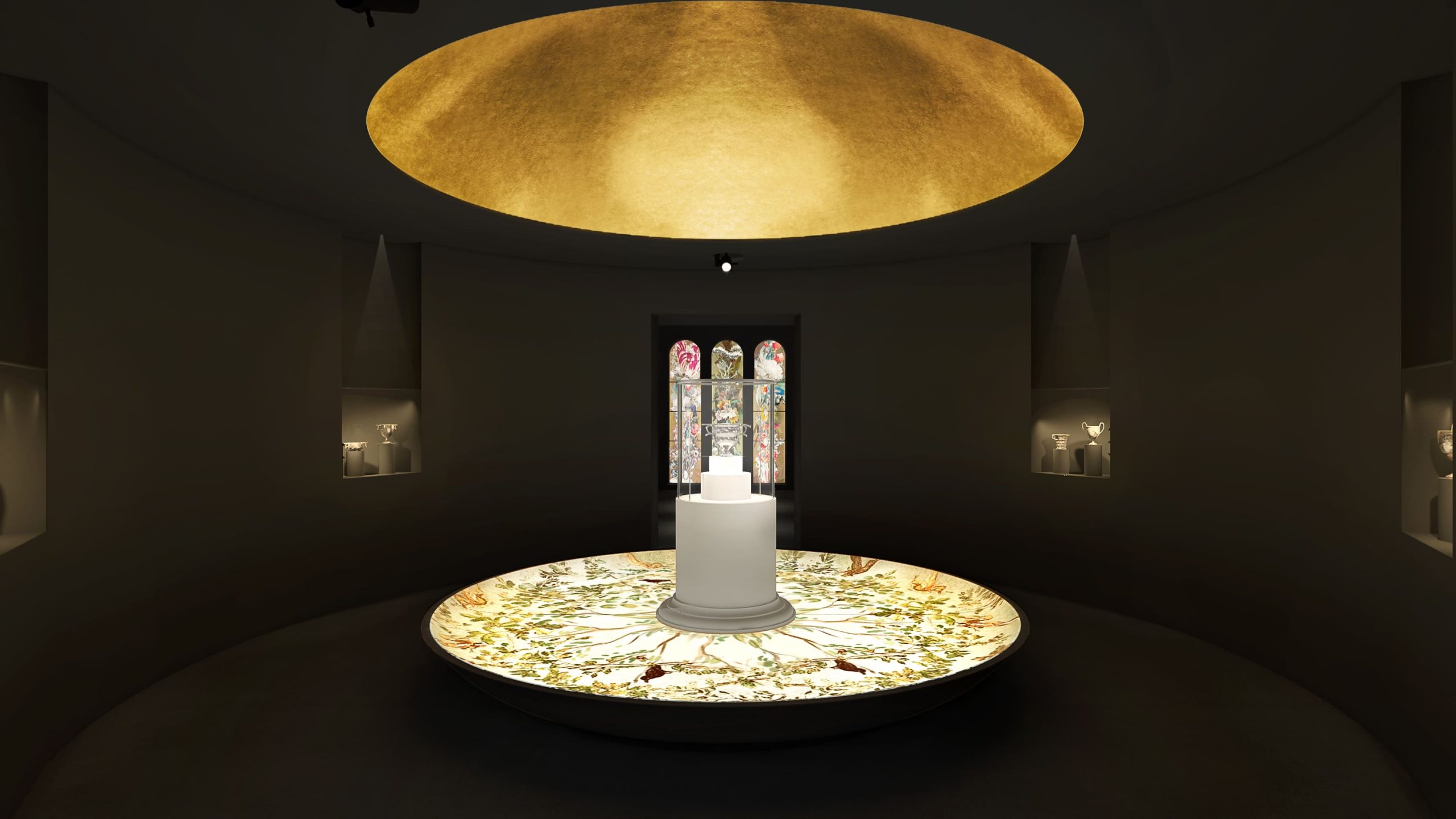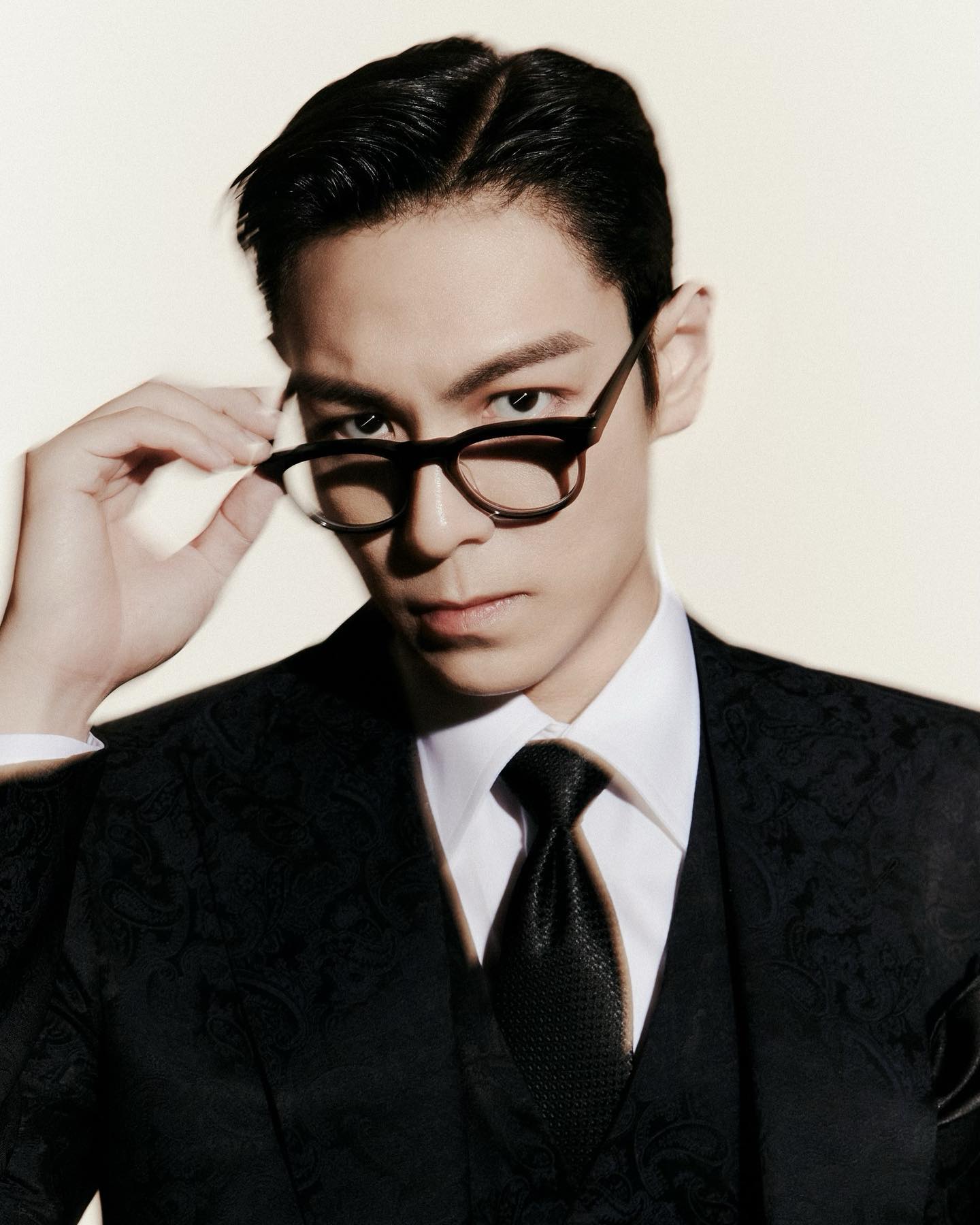The musician turned filmmaker talks to Zaneta Cheng about the long road to finding himself and how through his varied experiences he found his way to his greatest passion
When Juno Mak makes his way down the slope from his car to the hut where he is to get ready for our shoot, he’s dressed and groomed such that if he were to take a detour and step on set, the pictures would look good enough to print. Notice there’s no hairstylist credit because Mak came with his hair done – slicked back as per his signature style, perpetually camera-ready though there isn’t much anybody can style. There’s also no stylist credit because knowing himself best is a statement that applies to many areas of Mak’s personal and professional endeavours. As is the case with a fair number of celebrity shoots, Mak has requested a mood board and a selection of clothing. As is not the case with many celebrity shoots, however, Mak has decided to style the clothing himself.
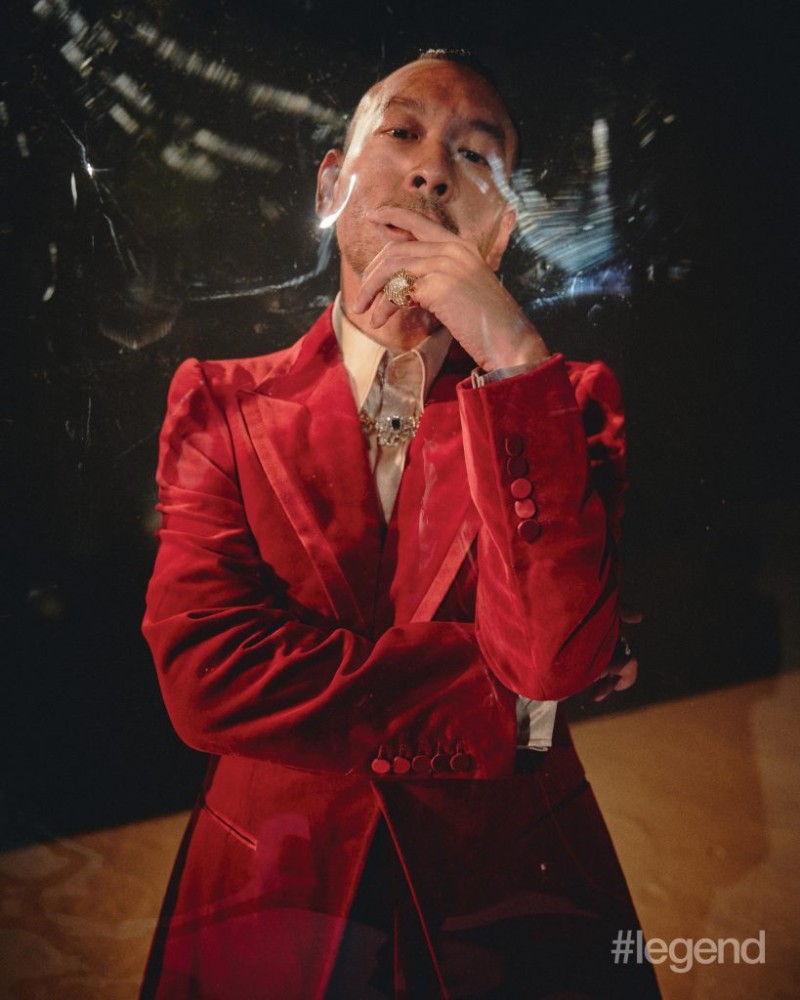
“Everyone is unique in a sense. Through the years, I’ve felt that there’s a certain kind of challenge in shoots because the clothes should be made to feel unique. That quality not only lies in the clothes themselves, which these definitely have, but also in the way that the subject carries them,” Mak says of photoshoots. “I usually receive [the mood board] and start thinking about the kind of vibe that the shoot might have and where it may go. I might not be able to necessarily put words to it but it’s for the vibe.”
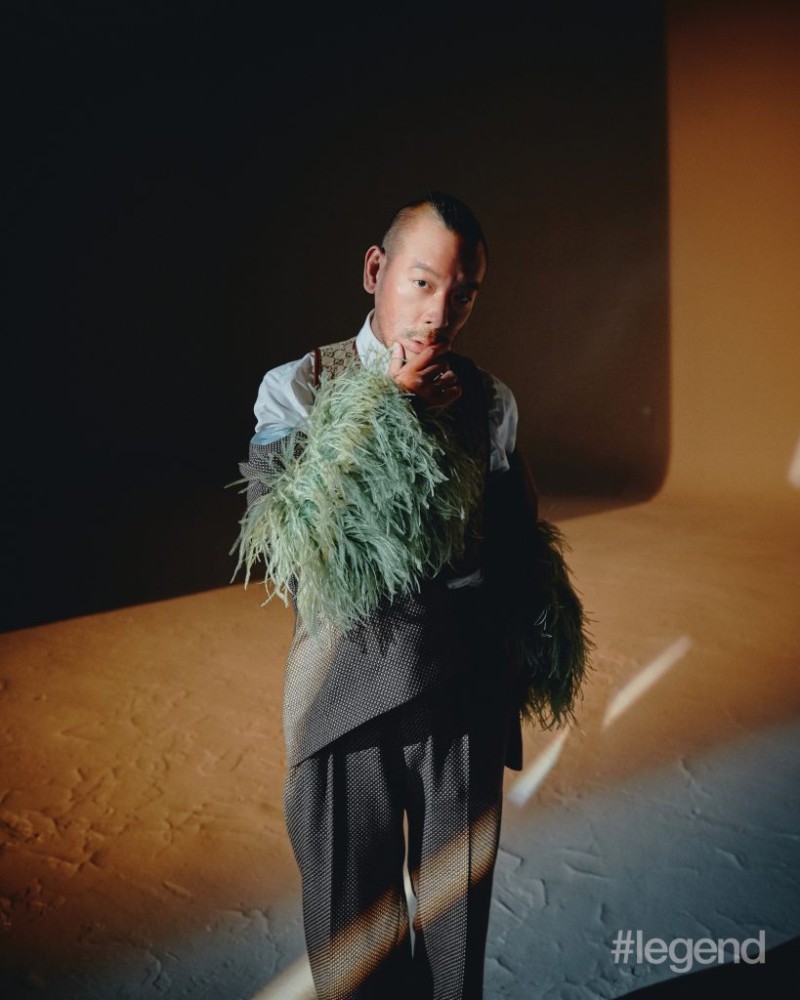
“For this shoot, we’re in these large studios and I figured that there must be a reason for why we’re shooting here rather than in a regular photo studio. I mean, one thing would be for the space and how wide it is, like the ambience and the static. It just feels natural for me to absorb what you guys wanted, what Gucci wanted and what I wanted to show in this shoot.”

Mak’s sense of self could be attributed to the various highs and lows he has experienced in the realms of music and film. As a child growing up in Vancouver, he lived in the mountains with a school and a video store roughly five minutes away. “We had a supermarket and then a video store, so I spent a lot of time in the video store. It was a very independent one and I would go there with my brother,” Mak says. “My parents weren’t really around so I got to watch a lot of weird films like The Texas Chainsaw Massacre, A Nightmare on Elm Street, The Last House on the Left, all these pretty extreme films at the time for a kid.”
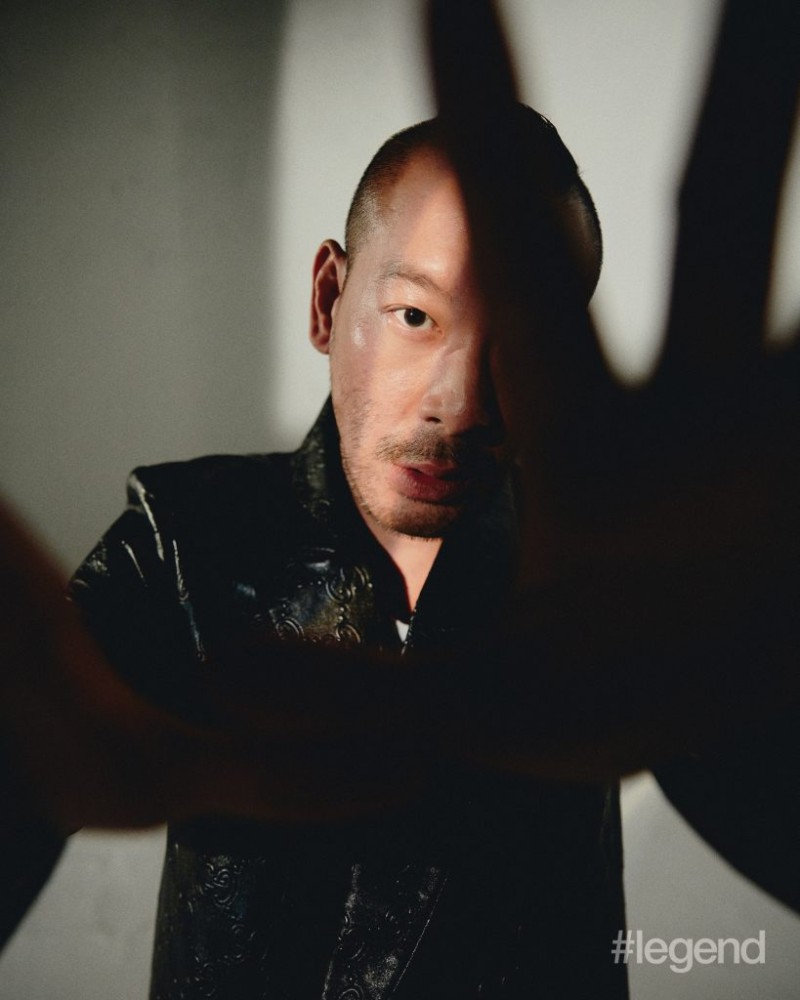
Anybody who has watched Rigor Mortis, the 2013 horror movie that marked Mak’s directorial debut, will be able to observe Mak’s penchant for the gory and the eerie. Modelling the literary and cinematic horror genre derived from Chinese folklore, which focuses on zombie- and vampire-type characters controlled by Taoist priests, Mak took out the comedic elements and injected even more darkness into an already morbid trope. Why? “What interests me the most are the darker sides of humans – it’s what makes them human. I’m not looking for jump scares because jump scares work maybe two times, three times, and then people just start to think that they’re funny,” Mak explains. “It’s about – I can’t really describe it – the scariness doesn’t have to involve violence or blood. It’s just quiet, right?”
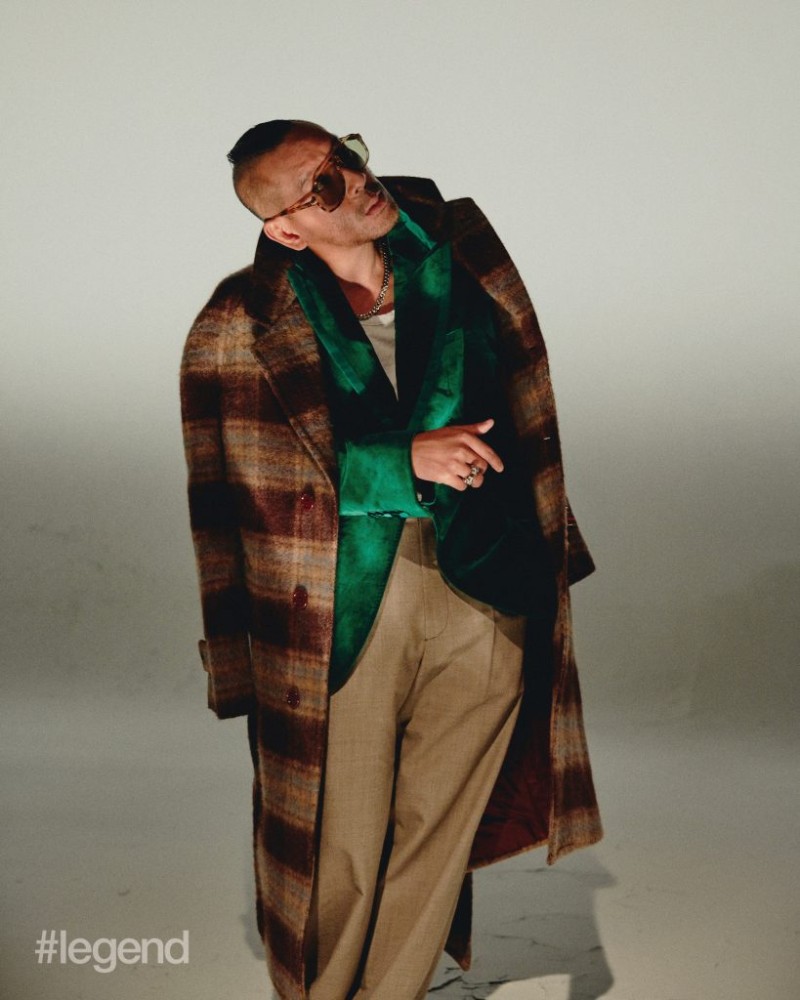
It’s an interesting trajectory to go from commercial Cantopop singer signed to Universal Music in the early 2000s to a filmmaker dealing with the deepest parts of the human psyche, but for Mak it was necessary for him to make the break. “I’ve always been interested in all sorts of fields but I wasn’t given a chance to be in films [as a young pop star]. It was when I went to renew my passport one year, I realised that I had no recollection of the places my passport said I had been to,” Mak recalls. “Because it’s always, you know, get off the flight and then to the hotel and into the stadium. Then rehearsal and then from show to show. There are always dinners and stuff like that. The next day, we fly out to other places. It was quite scary to me because I have no recollection or real memories of those places and it was then that I realised that that probably wasn’t the way I should live. I really wanted to explore the places I go to and to really get into the jobs that I’m into.”

Mak soon left Universal and joined an independent label where he says he began a decade-long journey of figuring out who he was and what represented him. It was during this time that he slowly returned to film.
“I’ve always loved film but the first chance I got in the entertainment industry was working in music so I started there. But along the way, I just felt that storytelling through film, lighting, music and acting – also the writing – come together. I mean, song durations are quite limited. You get six minutes max but the traditional is like three-ish, four minutes and I felt that there was a limit to storytelling in songs. So in the tenth year of me being in show business I was given a chance to either work on a concert or write my own script. So that’s really how I went from music to film,” Mak explains. “I wanted a bigger frame, bigger duration, more time to really tell a story.”
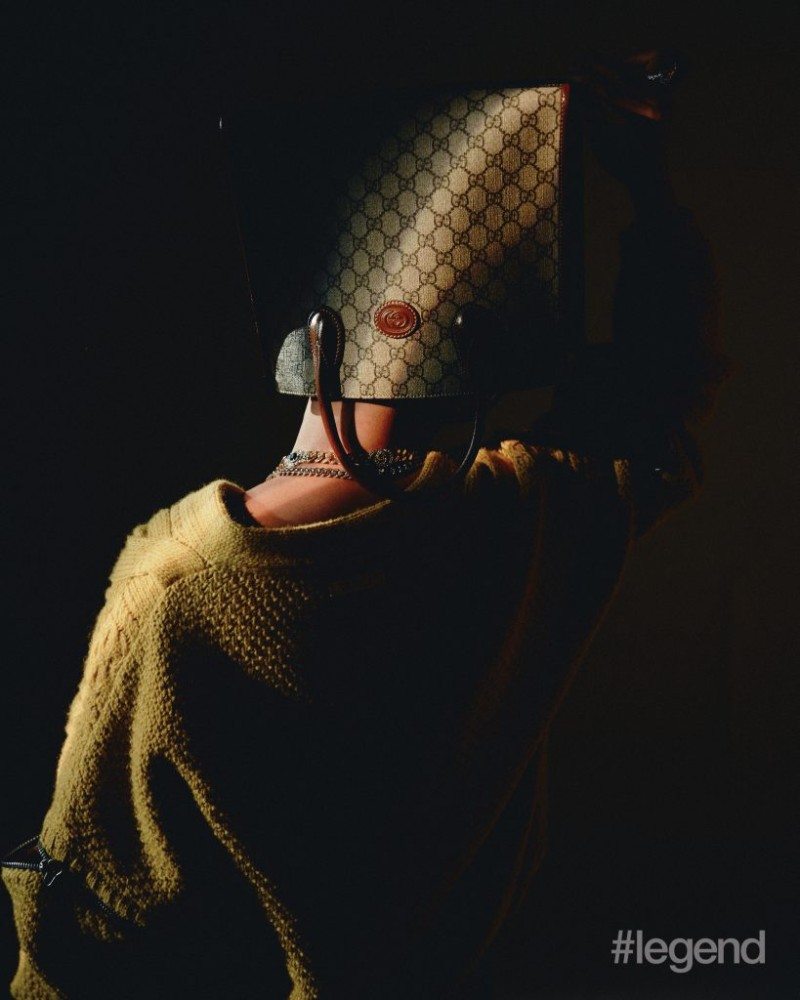
In rather Hitchcockian style, Mak’s scripts are written to a tee. The weather, the atmosphere, is described like that of a novel and he allows no room for interpretation once on set. “A lot of people think that working on a film set is about improvising, being creative,” he says. “But that’s not how I feel. The creative process is in the writing of it. Once I get on set, and the camera rolls and shoots, it’s execution. And for me, you have to give me exactly what I want. So this is a bit different from how other directors work on set.”
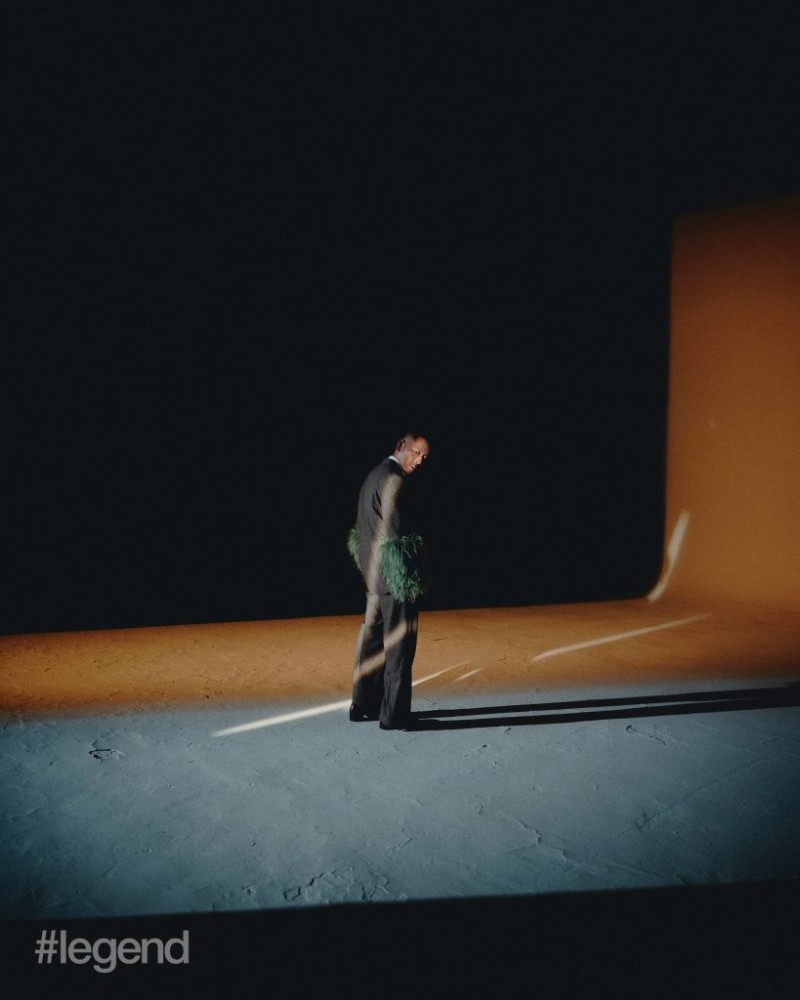
light blue oxford cotton shirt and black leather loafers from Gucci
In a way, finding his way back to film has given Mak a new perspective on music. A great collaborator with musical figures such as Kay Tse and Karen Mok, Mak’s approach to a collaboration has changed since his work in film.
“Before it was kind of about my style and yours and what might happen when we come together. What would that chemistry be like?” Mak says. “Since I started working in film, I got a clearer picture of what I wanted to do and since then all collaborations feel like a film casting to me. I’d tell my collaborators what I want, and give them characters. I’m not really working with Kay or Karen, it’s the character that I’m giving to them.
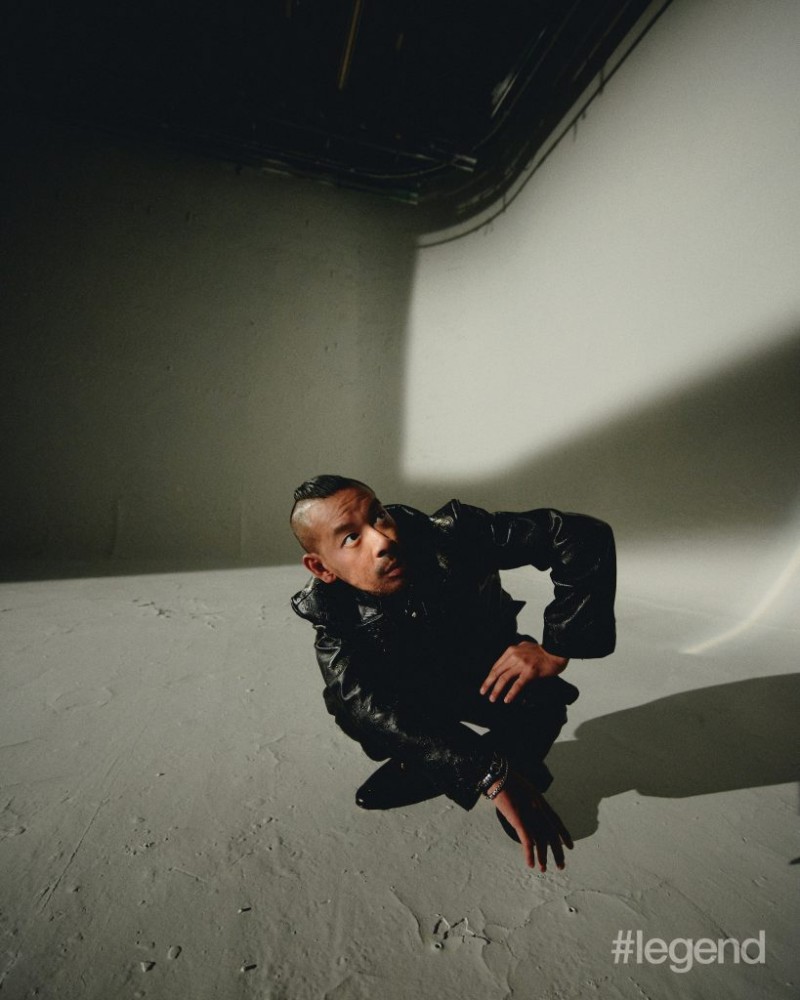
“We worked together on an album called Addendum, and I was glad that we built a kind of trust. At first, I mean, whoever I invited would have an interesting kind of feeling. It’s quite refreshing. Like these two ladies, they’ve done a lot more films than I’ve done but have never really been asked to get into a character for musical projects so I think it might have been refreshing for them and certainly more flexible for me.”
After all this, it comes as a bit of a surprise when, asked who his #legend is, Mak gives the immediate response of “David Attenborough”. Probably the least dark or gory man to mention, Mak’s reason is that Attenborough “gets to see everything – that great voice, he’s a great storyteller and the inspiration for my projects aren’t really from film. I read a lot, I get inspiration from my cats and from places that I’ve been.”

With a film on the way, music projects and a clothing line, Mak is certainly not slowing his momentum anytime soon, taking respite from one project to build up his universe through another, all circling around a unique aesthetic and personality that has taken decades of active work to build. It sounds like hard work but to Mak it’s more than worth it.“
As your age increases, you definitely learn more about yourself,” he says. “It was like a big prep run for me – around 10 years of my time before I got into film – but being on set gives me a kind of thrill that I don’t get on stage. And before I got there, I learnt along the way that it’s about knowing your own pros and cons. I’d have to say that I have a lot of patience. Definite pro. And it’s not really about film or work. It’s basically how to treat life. And a lot of good things take time.”
See also: #legendloves: Hortus Deliciarum, Gucci’s new high jewellery collection
CREDITS
Creative concept and production / #legend
Art Direction / Zaneta Cheng
Photography / Buffacow at SAMAGANA
Director / Buffacow at SAMAGANA
Producer / Iris at SAMAGANA
DOP / Louis Lo Quinton Wong
Photography Assistants / Sing, Mike, Kevin and Feilung
Editorial Assistants / Alex Loong and Stephenie Gee
Make-up / Samantha Siu


